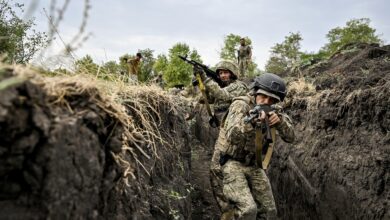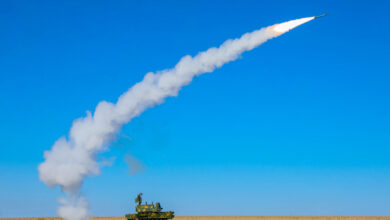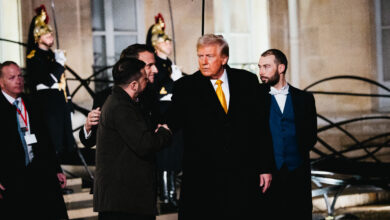
By Stephanie A. Malin
Colorado State University
The 2018 U.S. Nuclear Posture Review, recently ordered by President Donald Trump, details subtle yet important changes in the U.S. approach to nuclear weapons. Though the new NPR states that the U.S. supports efforts to realize nuclear non-proliferation and parallels the 2010 Nuclear Posture Review in many ways – such as practical actions related to modernization – this NPR emphasizes important changes in the global political landscape since 2010.
Namely, the 2018 NPR frames North Korea, Iran, and potentially violent non-state actors as serious threats – and perhaps ones warranting increased nuclear action. The report also subtly shifts the discourse about the use of nuclear weapons to respond to non-nuclear threats. The nature and degree of those threats are obscured in this newer NPR; it’s now not clear just how serious or existential that ‘non-nuclear’ threat would have to be to warrant a nuclear response from the U.S.
These shifts can be read as subtle, especially when simply reading the NPR. But they matter – and signal more substantial shifts in the U.S. nuclear posture. The NPR, after all, lands in a charged political context – created largely by Trump’s aggressive rhetoric – that belies the benign and technical language of the NPR. As Rebecca Hersman recently observed on a Center for Strategic & International Studies podcast, context matters – and the new NPR has to be read as part of a substantially different nuclear posture of the current U.S. presidential administration.
We do not live in the same context that greeted the 2010 NPR, when then-U.S. President Barack Obama signaled international collaboration on nuclear disarmament and even envisioned a nuclear-free world. Instead, during the 2018 State of the Union address, Trump declared the U.S. would work to fortify and increase our nuclear arsenal. Trump frequently takes to Twitter to taunt North Korea’s Supreme Leader Kim Jong-un about the size of his nuclear arsenal. In this and many other ways, Trump frequently flaunts the very notions of nuclear stigma and Mutually Assured Destruction that kept the Cold War from becoming a nuclear apocalypse.
Further, the situation remains a diplomatic disaster that isolates the U.S. even more from the global community, given our still-understaffed State Department and the stark contrasts between this aggressive posturing and the actions of 122 non-nuclear nations that approved a treaty on nuclear non-proliferation at the United Nations in July 2017.
While the 2018 NPR document itself does not specifically call for a new nuclear arms race or new weapons production, context again signals that this remains an option. One that may be foreshadowed by important developments in U.S. domestic uranium production. Uranium provides the raw materials for nuclear energy and weapons development.
In the U.S., many uranium deposits are on or near public or tribal lands on the Colorado Plateau. And these public lands are now under threat, as this Administration opens them up to oil and gas development – and to uranium production. For instance, though Energy Fuels claims they did not influence recent decisions to reduce the Bears Ears National Monument by 85 percent, access to uranium deposits is likely a central driver behind the administration’s decision to reduce public land protections in that area. Further, the uranium industry’s legacies of environmental racism and contamination seem to be resurfacing, as Trump’s reduction of Bears Ears fundamentally disrespected tribal sacred lands and diminished their access to and control over lands vital to multiple tribes’ lifeways and cultural practices.
Other conflicts related to renewed uranium production unfold across the Colorado Plateau. Tribes and corporations fight over water rights and water access, as the Trump administration once again opened up previously protected lands around the North Rim of the Grand Canyon for uranium exploration.
Trump’s unnecessarily aggressive nuclear posture – and these subtle domestic changes – are not only existentially terrifying, then. They also disrespect and disregard American communities where people still suffer from the legacies of our nation’s first forays into nuclear weapons development. These are the places that helped the U.S. ‘beat’ the U.S.S.R. and become a global economic superpower. But these are also the places left invisible and forgotten. And, in Trump’s declarations about nuclear re-proliferation, their histories, sacrifices and on-going environmental health disasters are neglected, disrespected and ignored.
The early phases of the nuclear fuel cycle – particularly uranium mining and milling – are vital parts of the nuclear weapons production cycle. During the Cold War, the U.S. depended upon hundreds of communities and thousands of Americans to supply uranium for the war effort. People prospected for uranium, worked in mines and mills, or enriched and otherwise processed the element for weapons production. These communities remain mired in the environmental injustice and public health impacts of this nuclear arms race. And if this race accelerates again, these communities are likely to be the epicenter of production once again.
The Navajo Nation suffers perhaps the most acutely from uranium production’s legacies. There are over 4,000 abandoned uranium mines throughout the American West, and at least 500 of them are on Navajo land. Here, communities still reel from extensive uranium contamination, and their quality of life and health is deeply diminished as a result.
Not only do native people feel this impact, so do other poor and spatially isolated communities scattered along the Colorado Plateau – communities that provided uranium for the U.S. nuclear arms race. Communities like Monticello, Utah, or Nucla, Naturita, or Uravan, Colorado. Here, cancer clusters, birth defects, and uncertainties about remediation of former radioactive sites permeate daily life, though our federal government does little to address these injustices. Even as we discuss an aggressive nuclear posture and greater investments in those programs and our military.
My focus on uranium’s legacies doesn’t even begin to do justice to the legacies left from other phases of the nuclear weapons production. Plutonium is a highly toxic and human-made ingredient necessary for nuclear weapons production. Plutonium production has left nuclear sacrifice zones and public health disasters around the U.S. For instance, Hanford, Washington, was a central hub for plutonium production during World War II and the Cold War – and is now one of the most polluted sites in the Western Hemisphere. Its current massive clean up is incredibly risky and has generated several unexpected accidents.
In Colorado, the former Rocky Flats Nuclear Weapons Plant, where 70,000 nuclear triggers were constructed during the Cold War, stands at the center of controversy over the reliability of the site’s remediation, safety issues with public access, and on-going concerns over public health and rare cancers that may result from exposure to plutonium and other contaminants.
Trump’s calls for a more aggressive nuclear posture, then, represent a callous and ignorant push to revitalize our nuclear arsenal. While modernization and other efforts make sense, the context and tone Trump creates apart from the 2018 NPR makes the subtext of that document more threatening that it initially reveals. Instead, we must see this as a part of a new U.S. nuclear stance that is dangerous, historically ignorant, and which puts the U.S. at risk of repeating and perpetuating grave injustices of the past.
We can do better than this.

Stephanie A. Malin is an environmental sociologist specializing in natural resource extraction, environmental justice and health, and rural development. On this topic, she has written the book The Price of Nuclear Power: Uranium Communities and Environmental Justice (Rutgers University Press 2015). Stephanie is an Assistant Professor in the Department of Sociology at Colorado State University.
All views and opinions expressed in this article are those of the author, and do not necessarily reflect the opinions or positions of The Defense Post.
The Defense Post aims to publish a wide range of high-quality opinion and analysis from a diverse array of people – do you want to send us yours? Click here to submit an Op-Ed.










